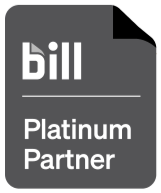
It's tax season and you're regretting your disorganized habits of last year. What a mess! There are receipts piled on top of your desk, some more lingering in your kitchen "junk" drawer, and even more crumpled up in the crevices of your car (think of all those gas receipts!). Ugh. You really don't want this to ever happen again, right?
The time you spend trying to gather a year's worth of receipts, invoices, expenses, etc at the end of the year is far more than the time you spend if you keep up on it throughout the year. Time is money, right? Here's 5 things you should do at the beginning of the year that will set you up to become one of the profitable businesses you hope to be by the end of the year:
01. Create Goals That Support Your Purpose
Before you can think "get organized," you should probably know the why behind your organization habits for the year. There are a lot of generalized checklists out there to help you create a routine process, but it really depends on what your business goals are.
Define Your Purpose
If you already have a clearly defined purpose for your business, take some time to review it and make any necessary updates.
If you don't have a business purpose, why not? A business purpose is what drives a company and its employees. Research has shown that goals are often missed, especially if there's no obvious purpose behind them. Make sure you and your team are clear on the company's mission and purpose for the upcoming year. Show them the why.
What Are Your Financial Goals This Year?
Based on your company's purpose, you'll want to have some goals in mind.
- Do you want to expand? How?
- Do you want to generate more revenue? What do you want to do with the extra cash flow?
- Do you want to save on taxes and re-invest those dollars into the company?
- Are you thinking about applying for outside financing?
- Do you want to hire more employees?
- Do you want to expand your product offering?
If you know your goals, you'll know how to best organize your financial records to support your strategy.
Now that you know what your purpose and goals are, you can organize in a strategic way. In general, here are some things you’ll want to think about.
Would you like extra help this tax season? Sign up for a FREE tax consult here.
02. File System for Physical Financial Documents
This usually takes the form of a filing cabinet. If you’ve already got a good filing system going, take a couple hours to update it and clean out any unnecessary files. If you plan on growing your customer base, you might need to get another filing cabinet to accommodate the explosion of growth you’ll be experiencing. One of your goals could be to expand your file cabinet collection--physical proof that your company is definitely growing.
If you don’t have a filing system in place, you’ll want to start one right this second. Why now? Because you’re about to head out the door and buy lunch for everyone, and you want to have a place to file the receipt when you get back from lunch. My point: money comes in and out of the business every day, and putting this off will pile up faster than you can blink.
Here’s some categories you’ll want to have files for:
Vendors
Customers
Employee Overhead Expenses
Building Expenses
Equipment Expenses
03. Digital File System
Having a digital backup is always a great idea these days. There’s some really great apps that will help you keep track of receipts when you’re on the go like Shoebox. Find one that works best for you. It will change your life and give you piece of mind.
And you'll definitely want to record all of your expenses, customer payments, etc with some kind of accounting software. If you're super frugal and super basic you might just start with organizing a spreadsheet with Excel or Google Docs. The most common of all software is QuickBooks. If you've got big goals for your business this year, it might be time to invest in QuickBooks (and possibly hire someone to help you keep things in order as you rapidly expand).
04. Reconcile, Reconcile, Reconcile
Put it on your calendar now. Choose a day at the end of the month or at the beginning of the month to reconcile your accounts receivable (A/R) and your accounts payable (A/P). Do not let anything get in the way of reconciliation. If you missed a couple things here or there throughout the month, you can catch up now instead of at the end of the year when tax season is upon you.
05. Schedule Daily Time for Accounting Chores
If you set aside 30-60 minutes every morning (before you check your email!), you'll know your cash position with certainty (rather than going with an estimate), you'll know how your company is getting closer to its goals and what changes need to happen as soon as possible, and you'll never be surprised. During this daily routine you can:
File & Record Expenses
Create & Send Invoices
Make Vendor Payments
Keep Tabs on Overhead Employee Expenses
+ More
Come up with a system that will enable you to reach your financial and growth goals. Make a daily routine, and dump physical papers into actual files rather than on the floor. When Tax Season 2015 rolls around, you'll finish up your taxes in no time.













.png)




